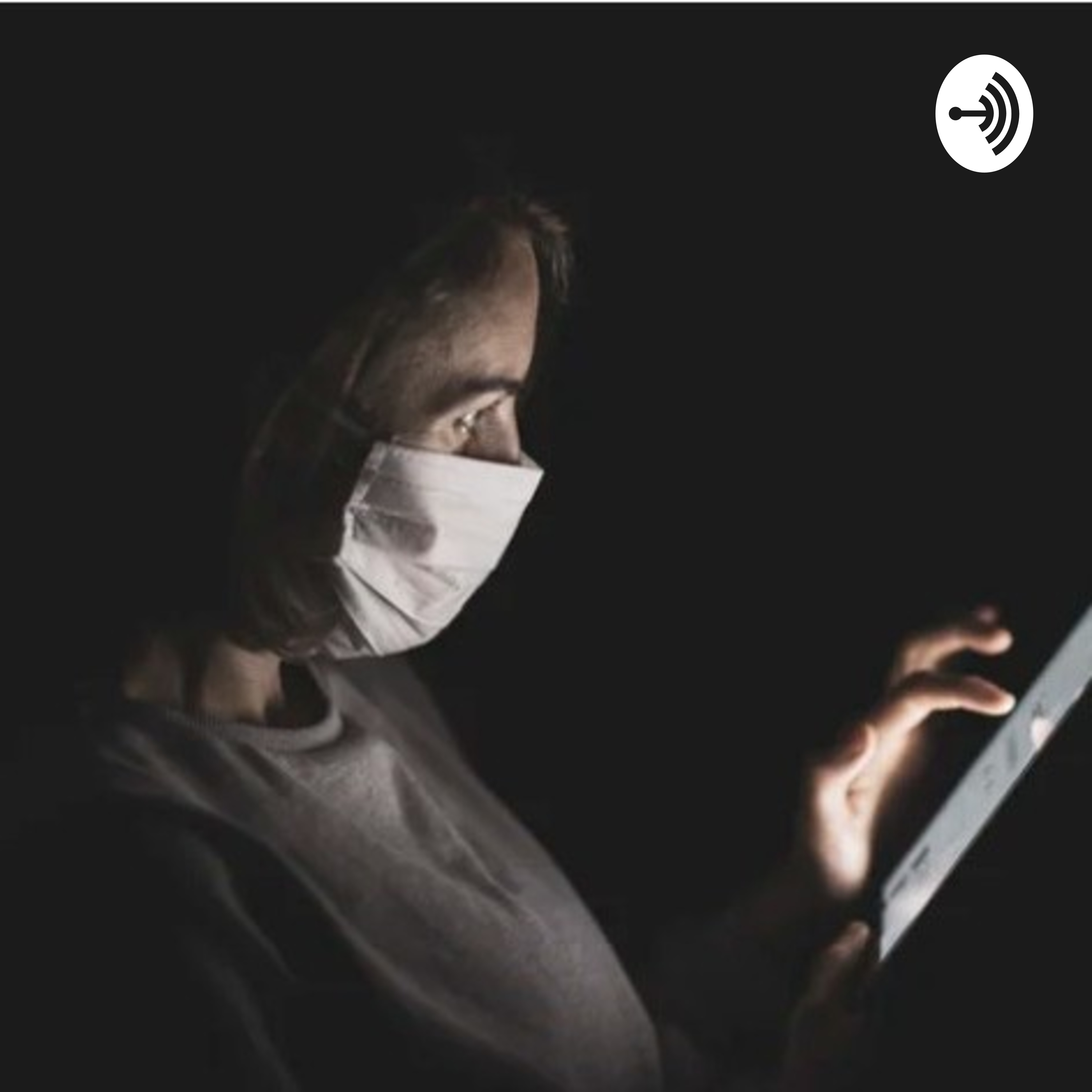ASCO GuidelinesAuthor: American Society of Clinical Oncology (ASCO)
Explore pivotal recommendations from the latest evidence-based clinical practice guidance with ASCO Guidelines. Join us to discover essential insights and navigate the ever-evolving landscape of cancer research and treatment. Language: en-us Genres: Health & Fitness, Medicine Contact email: Get it Feed URL: Get it iTunes ID: Get it Trailer: |
Listen Now...
Management of Antineoplastic Extravasation: ONS-ASCO Guideline
Thursday, 18 September, 2025
Dr. Tanya Thomas and Dr. Aparna Jotwani join the podcast to discuss the new Oncology Nursing Society and American Society of Clinical Oncology evidence-based guideline on the management of antineoplastic extravasation. They discuss recommendations from the expert panel on: management of extravasation of vesicant or irritant with vesicant properties antineoplastic agents, management of extravasation of paclitaxel or docetaxel, use & duration of thermal compress, and escalation of care. They share the importance of this comprehensive interdisciplinary guideline, highlight the algorithm as a useful tool for clinicians, and outline the outstanding questions related to the management of extravasation. Read the full guideline, "ONS/ASCO Guideline on the Management of Antineoplastic Extravasation" at www.asco.org/supportive-care-guidelines TRANSCRIPT This guideline, clinical tools, and resources are available at www.asco.org/supportive-care-guidelines. Read the full text of the guideline and review authors' disclosures of potential conflicts of interest in the JCO Oncology Practice, https://ascopubs.org/doi/10.1200/OP-25-00579 Brittany Harvey: Hello and welcome to the ASCO Guidelines podcast, one of ASCO's podcasts delivering timely information to keep you up to date on the latest changes, challenges, and advances in oncology. You can find all the shows, including this one, at asco.org/podcasts. My name is Brittany Harvey, and today I'm interviewing Dr. Tanya Thomas, clinical chair of the guideline and clinical nurse specialist from University of Virginia Health, and Dr. Aparna Jotwani, medical oncologist from Baylor College of Medicine, authors on "Management of Antineoplastic Extravasation: Oncology Nursing Society – American Society of Clinical Oncology Guideline." Thank you for being here today, Dr. Thomas and Dr. Jotwani. Dr. Aparna Jotwani: Thank you. Dr. Tanya Thomas: Thank you for having us. Brittany Harvey: And then before we discuss this guideline, I'd like to note that ASCO takes great care in the development of its guidelines and ensuring that the ASCO conflict of interest policy is followed for each guideline. The disclosures of potential conflicts of interest for the guideline panel, including Dr. Thomas and Dr. Jotwani, who have joined us here today, are available online with the publication of the guideline in JCO Oncology Practice, which is linked in the show notes. So then to dive into the content here, Dr. Thomas, could you start us off by providing an overview of both the scope and the objectives of this guideline? Dr. Tanya Thomas: Yes, so the objective of this guideline is to provide the evidence-based recommendations to help support our interdisciplinary teams, including the oncologist, the advanced practice providers, pharmacists, and nurses who are involved in the care and management of patients who are experiencing an extravasation of an antineoplastic agent. While rare, the antineoplastic and certain chemotherapy extravasations are oncologic emergencies. The recommendations are to minimize negative consequences and provide a standardized approach to the care when such an event occurs. Dr. Aparna Jotwani: I would add that our scope is limited to intravenous antineoplastic vesicants, irritants, and irritants with vesicant potential. The scope of the guideline applies to the care team for adult oncology patients receiving treatments through venous access. Outside the scope is management of extravasation during other routes of treatment administration, such as intraperitoneal, intravesical, and hepatic arterial infusion. Our recommendations regarding vascular access for therapy or interventions to prevent extravasations are also outside of the scope for this guideline. Brittany Harvey: Understood. I appreciate that background and understanding what's in scope and what's out of scope for this guideline. So then I'd like to pivot and talk about the key recommendations of this guideline across the clinical questions. So first, Dr. Jotwani, what does the panel recommend for patients with extravasation of vesicant or irritant with vesicant properties antineoplastic agents? Dr. Aparna Jotwani: The panel strongly recommends for all classes where an antidote exists to proceed with using the antidote. Recommendations for paclitaxel and docetaxel are specifically addressed in a recommendation. This is further detailed in Tables 1 and 4 within the guideline. Evidence on the use of antidotes for extravasation is limited to nonrandomized, uncontrolled, observational studies and case series. Placebo-controlled trials on this topic would be unethical. There is also a lack of comparative data for different antidote strategies. However, potential benefits of using the antidotes include tissue preservation and avoiding tissue necrosis. In developing the guidelines, we had an in-person roundtable discussion and weighed risks and benefits to ensure patient safety above all else. Brittany Harvey: I appreciate that description of the recommendation here. So then you just mentioned that there's a specific recommendation for paclitaxel and docetaxel. So what is recommended for those patients with extravasation of paclitaxel or docetaxel? Dr. Aparna Jotwani: So here, we conditionally recommended the specific use of hyaluronidase as the antidote. This was based on five studies that all used hyaluronidase as an antidote to lower the risk of tissue necrosis. In the studies included, with a subgroup of patients that experienced taxane-related extravasation, development of necrosis ranged from 0% to 0.83% among the patients who received an antidote. The potential harms associated with this were likely trivial. Brittany Harvey: Thank you for providing that recommendation as well. So then the next section of the guideline, Dr. Thomas, what does the expert panel recommend for use and duration of thermal compress? Dr. Tanya Thomas: So the expert panel actually recommends the use of thermal compresses, and the recommendations are based on the available literature for the various agents and the actual time frames most frequently used for the compress application. The utilization of a thermal compress is recommended for 15 to 20 minutes at a time for 3 to 4 times daily, at least for the first 48 to 72 hours after that extravasation occurs. The actual frequency and duration may vary based on the extent of the extravasation and the agent involved in that extravasation. The intent of the warm compress is to help disperse the agent and reduce the localized accumulation of the agent, whereas the cold compress, it actually helps prevent the dispersion or the spread of the agent while allowing the antidote to help neutralize that agent. Warm compresses are recommended for extravasations involving the vinca alkaloids, etoposide, oxaliplatin, and the taxanes - paclitaxel and docetaxel - only when coadministering the antidote hyaluronidase. The use of a cold compress is actually recommended for extravasations involving the anthracyclines, antimetabolites, alkylating agents, and taxanes when coadministration of the antidote hyaluronidase does not occur. Brittany Harvey: Understood. Those specific and actionable recommendations are really key for clinical practice. So then, following those recommendations, how does the guideline address escalation of care and surgical referral for patients with central line extravasation? Dr. Tanya Thomas: So this topic actually had a lot of discussion. And while there is not enough evidence to make strong recommendations, the expert panel recognized that surgical referrals should be considered in certain scenarios. Dr. Aparna Jotwani: We discussed that certain scenarios would include high-risk populations, such as patients that are receiving DNA-binding vesicants, those with high-volume estimated extravasation, and those with CTCAE grade 2, which would be erythema associated with symptoms such as edema, pain, induration, and phlebitis, or grade 3, which would be symptoms of ulceration or necrosis or concern for severe tissue damage, or grade 4, where you would have a life-threatening consequence extravasation, may have a greater likelihood of benefiting from surgical referral and/or escalation of care as deemed appropriate. Brittany Harvey: Great. And yes, it's really important to provide all of these recommendations that you've both just gone through, even when we're faced with very low evidence. So then, Dr. Thomas, in your view, what is the importance of this guideline, and how will it impact clinical practice? Dr. Tanya Thomas: So when extravasations occur in the clinical setting, members of the interdisciplinary team can be faced with barriers related to where to look for the information, how to find all the relevant information in one concise place, how to provide education to the patient about how to care for the site of extravasation in the home setting, and also when to escalate to specialized teams. This can actually cause some added stress and anxiety, and in certain circumstances, may lead to delays in efficient management. This guideline provides the resource clinicians have been looking for. It includes comprehensive recommendations for antineoplastic extravasations in one guideline while also providing a one-page algorithm with the key information regarding the management of the extravasations. This allows all levels of providers to have evidence-based recommendations regarding initial management of the extravasation, for instance, how to manage the infusion, key site assessment reminders, available antidotes, and the use of thermal compress; the required documentation, recommended follow-up scheduling, in addition to key aspects of the patient education. This type of guidance is not found in any other single document regarding antineoplastic extravasation. Having this document readily available at the point of care potentially can reduce time required for providers to search for management recommendations and also provide consistency in patient education and follow-up management scheduling. It reduces uncertainty within interdisciplinary teams and can help inform policy development for clinicians to approach extravasations with confidence. Brittany Harvey: Absolutely. I agree that this is an incredible resource for clinicians with the recommendations, the algorithm that you mentioned, and the supporting evidence that underpins these recommendations to really provide both efficient and effective care for patients. So beyond the impact for clinical practice, Dr. Jotwani, how will these guideline recommendations affect patients receiving antineoplastic treatment for cancer? Dr. Aparna Jotwani: Exactly. In addition to the clinical care team, we want to help and benefit our patients. So, oncology patients that experience extravasations are at risk for, aside of the side effects of tissue necrosis and infection, they also are at risk for delay of cancer treatment. In making these guidelines, we kept in mind the cost and the efforts for patients, additional visits that they could incur, additional time and supplies for care of the extravasation, as well as cost. Our guideline aims to provide an evidence-based approach to the care of oncology patients receiving antineoplastic intravenous therapy. While there are gaps in the data due to the nature of these events, based on careful literature review, these guidelines serve as a basis for quality, standardized oncology care during extravasation. Personally, I hope our graphics especially can be used across the systems to guide clinical care. Brittany Harvey: Definitely. We hope that these recommendations improve treatment and treatment outcomes for all patients receiving antineoplastic treatment for cancer. So then you've also just mentioned some gaps in the literature. So Dr. Thomas, I'd like to turn to you to wrap us up and ask, what are the outstanding questions for the management of antineoplastic extravasation? Dr. Tanya Thomas: Yes, that's a good question. Two of the main outstanding questions are related to the management of extravasations involving the novel agents and extravasations involving multi-agent regimens. The current literature regarding how to effectively manage the multi-agent regimens, for instance, there is no clear guidance for managing the extravasation for someone who is receiving a regimen that involves simultaneous administration of, let's say, a vinca alkaloid and an anthracycline. One of those agents requires a warm compress while the other requires a cold compress, and there are different antidotes for those two agents. Additionally, there has not been a lot of published information on the impact of extravasation of those novel agents like the antibody-drug conjugates. With the pace of the drug development, a subgroup of the guideline panelists actually are exploring case reports specific to novel agents to help inform some future work. Brittany Harvey: Yes, we'll look forward to learning more about how to address these ongoing issues and potentially impact guideline recommendations in the future as well. So I want to thank you both so much for your work to develop this incredibly important guideline, and thank you for your time today, Dr. Thomas and Dr. Jotwani. Dr. Aparna Jotwani: Thank you for the opportunity. Dr. Tanya Thomas: Yes, thank you. Brittany Harvey: And finally, thank you to all of our listeners for tuning in to the ASCO Guidelines podcast. To read the full guideline, go to www.asco.org/supportive-care-guidelines. I also encourage you to check out the companion episode on this guideline on the ONS podcast, available on Amazon Music, Apple Podcasts, Spotify, and YouTube Music. And finally, you can also find many of our guidelines and interactive resources in the free ASCO Guidelines app, which is available in the Apple App Store or the Google Play Store. If you've enjoyed what you've heard today, please rate and review the podcast and be sure to subscribe so you never miss an episode. The purpose of this podcast is to educate and to inform. This is not a substitute for professional medical care and is not intended for use in the diagnosis or treatment of individual conditions. Guests on this podcast express their own opinions, experience, and conclusions. Guest statements on the podcast do not express the opinions of ASCO. The mention of any product, service, organization, activity, or therapy should not be construed as an ASCO endorsement.











